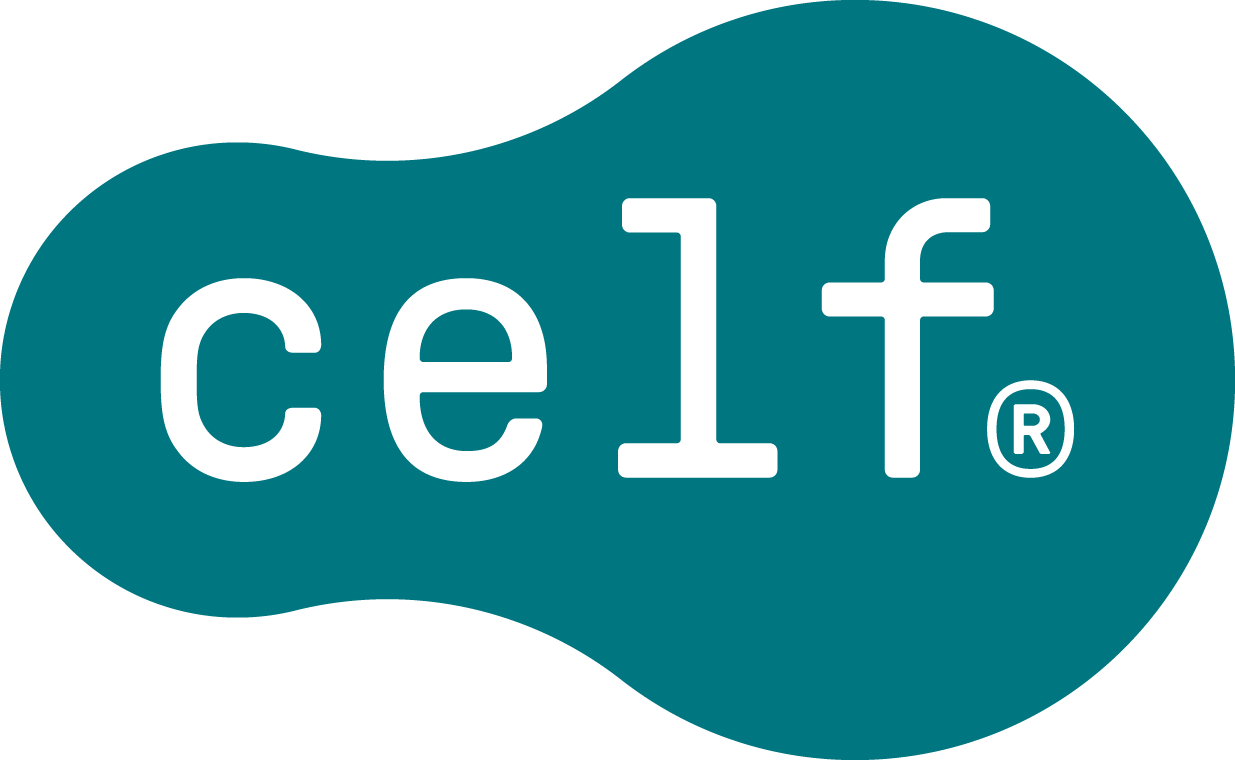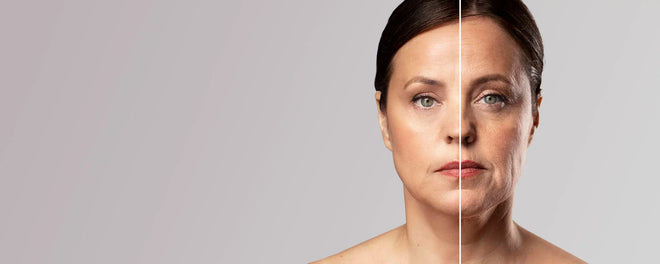Red Light Therapy for Anti-Ageing: UK Dermatologists’ Views
Table of Contents
Ageing gracefully doesn’t mean surrendering to fine lines and sagging skin. Today, innovative non-invasive treatments like red light therapy (RLT) are increasingly being explored by dermatologists and consumers as part of anti-ageing skincare routines. With UK dermatologists increasingly discussing their role in anti-ageing care, this guide unpacks the science, expert insights, and how tools like CELF Microvibration Therapy can complement RLT for even greater results.
What Is Red Light Therapy, and How Does It Work on Ageing Skin?
What is red light therapy (RLT), and how is it different from other light therapies?
Red light therapy uses specific wavelengths of light to penetrate the skin and stimulate natural cellular processes. Unlike blue light therapy, which targets acne by killing bacteria, or infrared light, which penetrates deeper into muscle tissue, RLT primarily addresses skin rejuvenation.
How does red light therapy biologically impact skin ageing?
At the cellular level, research suggests RLT supports processes linked to skin firmness, including fibroblast activity. Boosting collagen and elastin synthesis helps restore firmness and elasticity that naturally decline with age (NIH Study).
What wavelengths are used in anti-ageing RLT, and why are they important?
RLT typically uses wavelengths between 630 and 670 nm and 810 and 850 nm. Some studies suggest RLT help improve collagen density, circulation, and skin comfort.
Curious about how RLT and CELF microvibration therapy can complement each other? Explore our innovative approach → CELF Beauty.
What Do UK Dermatologists Say About Red Light Therapy for Anti-Ageing?
Are dermatologists in the UK recommending red light therapy for fine lines and wrinkles?
Yes. Some UK dermatologists describe RLT as a non-invasive option that support skin smoothness and firmness.
What clinical evidence do experts rely on?
Studies have consistently shown visible improvements in skin tone and texture within 4–6 weeks of use (JCAD Study).
Are there UK dermatologists or clinics offering RLT?
Clinics such as Eudelo, led by Dr Stefanie Williams, actively recommend and provide red light therapy.
For further reading, see the British Association of Dermatologists.
What Are the Proven Anti-Ageing Benefits of Red Light Therapy?
How does RLT affect collagen production and firmness?
Some studies, including NASA-led research, have explored how light therapy influence collagen production, though results vary.
Can RLT reduce pigmentation, sun spots, and dullness?
RLT supports a more even-looking complexion by promoting circulation and skin renewal.
Are the results permanent?
Results typically last as long as consistent treatments are maintained. Dermatologists advise ongoing sessions for sustained benefits.
|
Benefit |
Clinical Support |
Notes |
|
Collagen Boost |
✅ |
Up to 31% increase (NASA Study) |
|
Reduced Wrinkles |
✅ |
Visible in 4–6 weeks |
|
Skin Tone + Radiance |
✅ |
Improved circulation & oxygen |
|
Pigmentation Reduction |
⚠️ Limited |
Works best with other agents |
Want to amplify your RLT results? Combine with CELF Microvibration Therapy for visible radiance.
Is Red Light Therapy Safe for All Skin Types and Ages?
Are there any side effects?
According to NHS dermatology resources, RLT is generally considered low risk when used as directed, with mild temporary redness being the most common side effect.
Can darker skin tones use RLT effectively?
Yes. Research shows RLT is effective across Fitzpatrick skin types I–VI (PubMed).
What precautions should be taken?
Dermatologists recommend following device guidelines and avoiding overexposure.
🔗 Internal link: The Science Behind CELF for Safe At-Home Skin Renewal
How Does Red Light Therapy Compare to Other Anti-Ageing Treatments?
|
Treatment |
Invasiveness |
Downtime |
Collagen Impact |
Cost/Risk |
|
Red Light Therapy |
Non-invasive |
None |
✓✓ |
Low / Minimal |
|
Microneedling |
Minimal |
1–2 days |
✓✓✓ |
Medium / Mild |
|
Laser Resurfacing |
Invasive |
1–2 weeks |
✓✓✓✓ |
High / Moderate |
|
Retinol |
Topical |
No |
✓ |
Low / Minimal |
Explore how CELF leverages microvibration to boost serum absorption and accelerate your anti-ageing routine → CELF Beauty
How Can You Use Red Light Therapy at Home Safely and Effectively?
What devices are recommended?
Dermatologists suggest choosing CE-marked or clinically tested devices for home use.
How often should you use RLT?
Most protocols recommend 10–20 minutes, 3–5 times per week for visible results (PubMed).
Can RLT be paired with skincare actives?
Yes. Pairing with hyaluronic acid enhances hydration. Using CELF Microvibration Therapy beforehand primes the skin by exfoliation and boosting serum absorption.
What Are the Limitations and Myths Around Red Light Therapy?
-
Myth 1: RLT is a quick fix.
In reality, benefits appear after consistent use over 8–12 weeks. -
Myth 2: More sessions equal faster results.
Dermatologists note optimal sessions are limited to 3–5 per week. -
Myth 3: RLT replaces all professional treatments.
It works best as part of a holistic routine with topical and device-based care.
How Can CELF Supercharge the Benefits of Your Anti-Ageing Routine?
By combining microvibration therapy with RLT, you unlock a new standard in skin health:
-
CELF’s gentle microvibrations are designed to support circulation, serum absorption, and overall skin appearance.
-
Deeper hydration from improved absorption of serums like hyaluronic acid.
-
Gentle exfoliation for brighter, more even skin tone.
Ready to take control of your skincare journey? Combine red light therapy with CELF’s microvibration innovation and support your routine for skin that looks refreshed and radiant. Discover the power duo today → CELF Beauty.
References
FAQs
Q: What do dermatologists think of red light therapy for anti-ageing?
Many UK dermatologists view red light therapy as a promising non-invasive treatment for early signs of ageing. It can support collagen production, reduce fine lines, and improve skin texture when used consistently. Dermatologists usually recommend using clinically tested LED devices rather than low-quality options.
Q: Does red light therapy actually help with anti-ageing?
Yes, studies show red light therapy can help improve wrinkles, boost collagen, and increase skin firmness. Visible results depend on regular use and the strength of the device. It tends to work best for mild to moderate ageing concerns rather than deep wrinkles.
Q: What does Mayo Clinic say about red light therapy?
Mayo Clinic notes that red light therapy has potential benefits for skin rejuvenation and healing, but results can vary. They advise choosing safe wavelengths and certified medical-grade devices to avoid skin damage or poor outcomes.
Q: Is red light therapy scientifically proven?
Red light therapy has scientific research supporting collagen stimulation and improved skin elasticity. However, it is not a miracle cure and usually works best as part of a broad anti-ageing routine that includes sunscreen and dermatologist-recommended skincare.
Q: Is red light therapy safe for the face?
When properly used, red light therapy is generally considered safe for the face and suitable for most skin types. People with photosensitive conditions or who take certain medications should check with a dermatologist first.
Q: What is the best treatment for 70-year-old skin naturally according to dermatologists?
For mature skin, UK dermatologists often suggest red light therapy combined with gentle retinoids, vitamin C, hydration-rich skincare, and daily sun protection. For deeper sagging, they may recommend collagen-boosting clinic treatments like RF microneedling.




